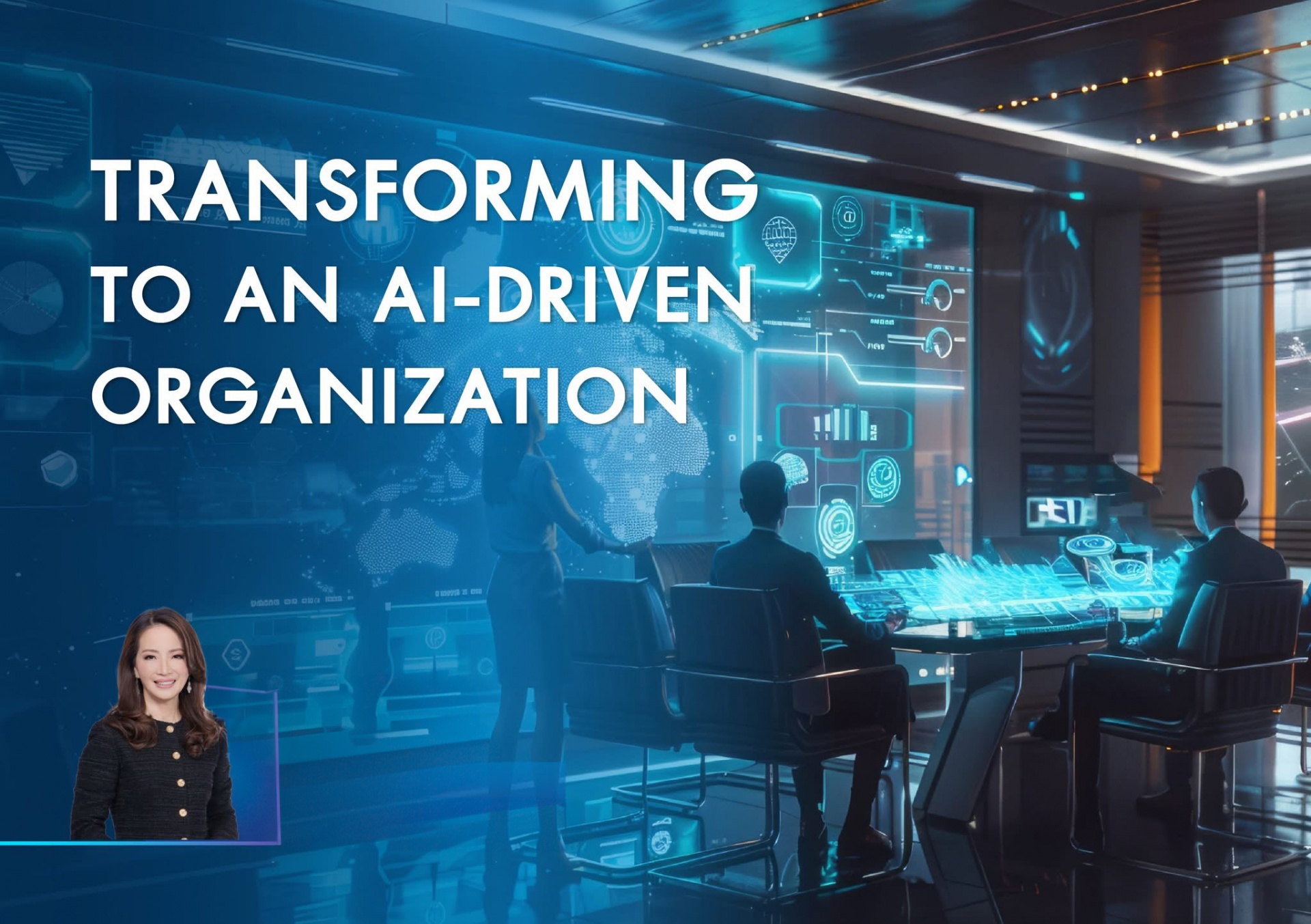Transforming to an AI-driven organisation
With its ability to generate various forms of content, including articles, images, videos, and even programming, in a short amount of time, GenAI has become a powerful tool that organisations are increasingly adopting and integrating into their operations.
 |
| Chairman of the Executive Committee and group CEO of WHA Corporation PCL Jareeporn Jarukornsakul |
According to a report by McKinsey, the global use of Generative AI is growing rapidly, increasing from 33 per cent in 2023 to 65 per cent in 2024. This aligns with Gartner’s findings that GenAI is playing an increasingly significant role in business sectors, especially in tasks such as customer service, marketing, and sales. Over 42 per cent of organisations use it to understand customer behaviour and create personalised experiences, while more than 31 per cent apply it to IT tasks, from user support and data management to system maintenance and cybersecurity. Additionally, some organisations are utilising it in finance, human resources, and legal departments to enhance efficiency and allow employees to focus on more complex tasks.
The potential of GenAI to elevate operations across all business functions makes it a crucial tool for enhancing organisations in every dimension. It starts with improving efficiency and reducing the burden of daily tasks, such as data verification and management or report generation. It then progresses to using AI for in-depth data analysis, enabling personnel to better meet customer needs.
Furthermore, it can extend to direct customer interactions with technology, such as using AI chatbots for answering questions or resolving issues, and even creating new revenue streams through AI-driven product or service development. All these opportunities contribute to organisational growth and competitive advantage.
However, implementing such technology in organisations still faces challenges. The main issues many organisations encounter are the lack of skilled personnel and sufficient data. Nevertheless, organisations can drive transformation in ways that align with their available resources. This could involve using ready-made solutions for small organisations that do not require significant investment, customising existing market solutions by integrating company data and training models to better fit the company’s context, or for large organisations with ample resources and specific needs, developing new models to meet their requirements as closely as possible. The choice of approach depends on each organisation’s readiness and goals.
As AI becomes a crucial part of transforming work processes across all business sectors, organisations that can smartly integrate technology will emerge as leaders in innovation and competitive advantage. True success, however, does not rely solely on technology but also on the capability of the organisation’s personnel to learn and adapt, ensuring the organisation can fully leverage AI. To seize the opportunity, it is important to drive people transformation, or develop personnel to be ready for change, to create a future-driven organisation powered by technology.
 |
 | WHA Smart Technology Industrial Zone -Thanh Hoa: shaping sustainable industrial development WHA Smart Technology Industrial Zone-Thanh Hoa reached a milestone with the issuance of an investment registration certificate for phase one of the project on November 28. Chairman of the Executive Committee and group CEO of WHA Corporation PCL Jareeporn Jarukornsakul spoke with VIR about this landmark project and WHA’s vision for shaping industrial development in Vietnam. |
 | Global initiatives for circular economy transition Chairman and CEO Jareeporn Jarukornsakul of WHA Corporation Public Co., Ltd. outlines five global initiatives, focusing on recycling resources in the production and consumption process through remanufacturing or reuse. |
 | Green Logistics is gaining traction to reduce greenhouse gas emissions Chairman and CEO Jareeporn Jarukornsakul of WHA Corporation Public Co., Ltd. delves into green logistics as companies look to slash greenhouse gas emissions and make the sector more sustainable. |
What the stars mean:
★ Poor ★ ★ Promising ★★★ Good ★★★★ Very good ★★★★★ Exceptional
Related Contents
Latest News
More News
- Partnerships drive sustainable finance (January 07, 2026 | 09:23)
- FDI inflows reach $38.42 billion in 2025 (January 06, 2026 | 17:55)
- $2.1 billion Nghi Son LNG-fired thermal power plant waits for investor (January 06, 2026 | 17:51)
- GE Vernova powers up Vietnam with first 9HA gas power plant in the country (January 06, 2026 | 16:54)
- Solid finish for manufacturing after volatile year (January 06, 2026 | 08:50)
- Meiko strengthens Vietnam operations with new PCB plants (January 06, 2026 | 08:49)
- Ho Chi Minh City backs $2 billion AI data centre with dedicated task force (January 06, 2026 | 08:43)
- PM sets January deadline for high-speed rail consultant (January 06, 2026 | 08:40)
- New decree spurs on PPP implementation (December 31, 2025 | 19:01)
- Global alliance develops $1 billion AI data centre network in Vietnam (December 30, 2025 | 10:08)

 Tag:
Tag:




















 Mobile Version
Mobile Version